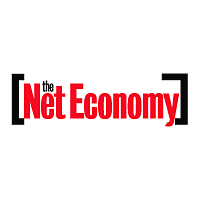 With the soft economy placing businesses in dire financial straits, off-premise retailers are shrinking their ad budgets by embracing digital advertising that attracts a most desirable demographic: 21- to 35-year-olds. For many years, David Breitstein, owner of the one-unit Duke of Bourbon in Canoga Park, California, advertised the typical way: through television, radio and print ads. Persuading customers to peruse his highly allocated California wine selection was an expensive endeavor, topping $30,000 annually. But now his ad expenditures are significantly cheaper, at approximately $15,000 a year. The decrease is due largely to the advent of new technologies, says Breitstein, who has dropped all forms of traditional advertising, except direct mail, occasional magazine print ads and email newsletters.
With the soft economy placing businesses in dire financial straits, off-premise retailers are shrinking their ad budgets by embracing digital advertising that attracts a most desirable demographic: 21- to 35-year-olds. For many years, David Breitstein, owner of the one-unit Duke of Bourbon in Canoga Park, California, advertised the typical way: through television, radio and print ads. Persuading customers to peruse his highly allocated California wine selection was an expensive endeavor, topping $30,000 annually. But now his ad expenditures are significantly cheaper, at approximately $15,000 a year. The decrease is due largely to the advent of new technologies, says Breitstein, who has dropped all forms of traditional advertising, except direct mail, occasional magazine print ads and email newsletters.
Suppliers continue to advertise in traditional media outlets, but anecdotal evidence suggests that the shriveling economy has forced off-premise proprietors—particularly single-store owners and smaller operators—to revamp their ad strategies. “Traditional advertising favors the big players instead of smaller businesses,” explains Rick Anderson, president of France 44 Wines & Spirits in Minneapolis. “In our case, running an ad for this one store generally doesn’t pay off. I have to make five times in sales what I spend on an ad for it to have been worth it.”
But chains are also changing their ways. “We’ve shifted dollars from print advertising to our website,” says Andy Lebamoff, co-owner of the 15-unit, Fort Wayne, Indiana-based Lebamoff’s Cap n’ Cork. The store’s website, Capncork.com, includes informative wine and beer articles, advertised promotions, news, special events and a link to its Facebook page. Lebamoff hired the Asher Agency to update the website and his next step will include adding inventory online, opening it up to the possibility of Internet sales.
France 44 has a lucrative partnership with the Web channel Wine-searcher.com, a Nextag-style site that compares wine prices among some 26,270 off-premise retailers worldwide. Users instantly generate price comparisons by typing in wine names and vintages. After clicking on an acceptable price, users are redirected to the retailer’s website. Sponsorship of the site, which includes top placement and banner advertisements, costs $440 a month, $2,240 for six months or $4,220 for 12 months.
Retailers have also found a home at search engine-style websites like Vinquire.com, a product database that provides listings, banner advertising and a WineFeed service ($195 to $435 a month) that boosts retailers to the top of Google’s results pages. Anderson of France 44 has found that this method has upped online traffic by 30% and has tripled Web sales, which were very low before he started using the service. “I like digital adverting because it’s measurable,” he says.
Many retailers are advertising on reputable text-centric blogs with an established following. Anderson is in the exploratory phase, but he’s cautious about the reliability and quality of offerings in the blogosphere. “That’s the tough part,” says Anderson, who has budgeted $1,000 a month for blog advertising. “You may think print media is fragmented, but anyone can be a blogger.”
Social networking sites like Twitter and Facebook allow retailers to send news updates, special event invitations, photographs and links to subscribing customers. Wade Shanower, president of the 21-unit Big Red Liquors Inc., based in Bloomington, Indiana, has amassed a collection of 25 Twitter Ambassadors: Cooperative customers who re-tweet or forward Big Red messages to their friends. The incentive for these ambassadors is $25 to $75 a month, based on that ambassador’s number of friends and frequency of re-tweets. Shanower, who started the program in June and has an ad budget of $150,000 a year, says that the response has been promising.
Meanwhile, e-newsletters have become the next generation of direct mail, with most retailers offering some form of weekly email update about new products, special events and sales, often specified for beverage subcategories. “We examined our email-opening rate and it was a lot lower than we wanted,” explains Big Red’s Shanower, who hired a full-time marketing and promotions specialist. The chain now sends a general e-newsletter, as well as targeted e-newsletters pertaining to wine, craft beer, Bourbon and Scotch. The general newsletter has an opening rate of 20%, and the targeted newsletters have an opening rate of 70%.
Many retailers have found a comfortable balance between direct mail and email, conceding both methods’ merits. For instance, Breitstein sends direct mail to members of The Wine Association of the Duke of Bourbon, beckoning them to attend eight to 12 events for $5,000 annually. Via email, he sends out his newsletters and sale notices, including The Great Carmageddeon Sale, which offered deep discounts via email during the California freeway closure. On that day, his sales volume tripled. “It took us two hours to select and price the wines, one hour to type up the piece and a second to hit send,” he recounts. “You can’t do that with traditional direct mail, can you?”
(By courtesy of Shanken News Daily)
